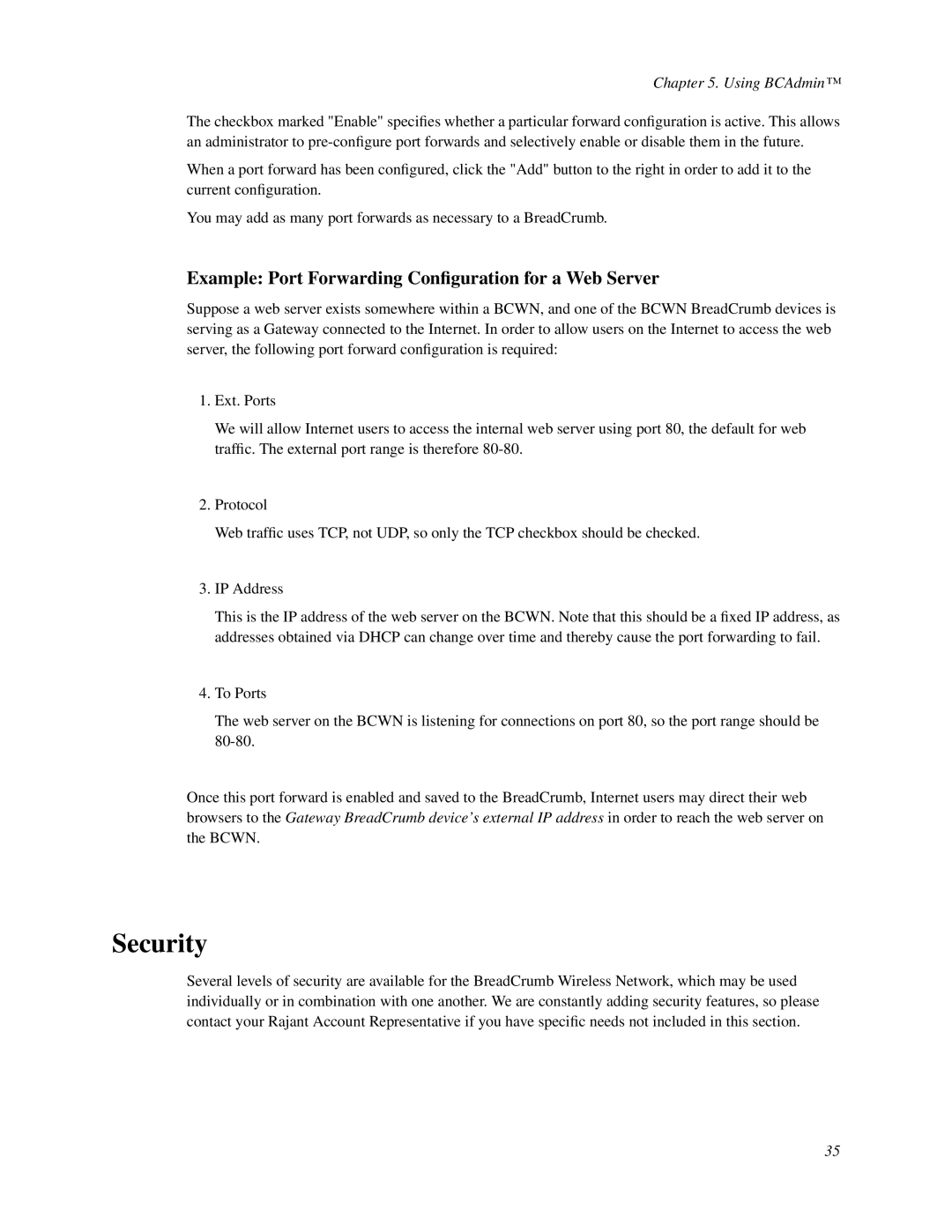Chapter 5. Using BCAdmin™
The checkbox marked "Enable" specifies whether a particular forward configuration is active. This allows an administrator to
When a port forward has been configured, click the "Add" button to the right in order to add it to the current configuration.
You may add as many port forwards as necessary to a BreadCrumb.
Example: Port Forwarding Configuration for a Web Server
Suppose a web server exists somewhere within a BCWN, and one of the BCWN BreadCrumb devices is serving as a Gateway connected to the Internet. In order to allow users on the Internet to access the web server, the following port forward configuration is required:
1.Ext. Ports
We will allow Internet users to access the internal web server using port 80, the default for web traffic. The external port range is therefore
2.Protocol
Web traffic uses TCP, not UDP, so only the TCP checkbox should be checked.
3.IP Address
This is the IP address of the web server on the BCWN. Note that this should be a fixed IP address, as addresses obtained via DHCP can change over time and thereby cause the port forwarding to fail.
4.To Ports
The web server on the BCWN is listening for connections on port 80, so the port range should be
Once this port forward is enabled and saved to the BreadCrumb, Internet users may direct their web browsers to the Gateway BreadCrumb device’s external IP address in order to reach the web server on the BCWN.
Security
Several levels of security are available for the BreadCrumb Wireless Network, which may be used individually or in combination with one another. We are constantly adding security features, so please contact your Rajant Account Representative if you have specific needs not included in this section.
35
